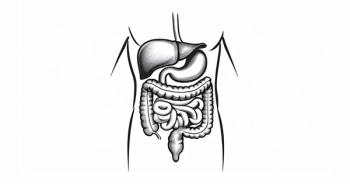
Runimotamab Plus Trastuzumab Shows Encouraging Activity and Tolerability in HER2-Positive Breast Cancer
Runimotamab plus trastuzumab resulted in positive clinical activity and tolerability over runimotamab alone in patients with HER2-positive breast cancer.
The combination of runimotamab, a T-cell engaging bispecific antibody, and trastuzumab (Herceptin) resulted in encouraging clinical activity and improved tolerability compared with runimotamab monotherapy in patients with HER2-positive breast cancer, according to a phase 1 dose-escalation study (NCT03448042).1
Findings from the study presented at the
“Runimotamab monotherapy was limited by its tolerability and we saw no antitumor activity,” Shanu Modi, MD, attending physician at Memorial Sloan Cancer Center, New York, New York, said during a presentation of the data at AACR meeting. “On the other hand, when combined with trastuzumab, we observed improved tolerability, decreased frequency of CRS [cytokine release syndrome], and a manageable safety profile,” Modi continued.
In the first portion of the trial (n = 20), single-patient cohorts received intravenous runimotamab every 3 weeks until a safety event occurred or progression. On day 1, patients received the step up dose, which was one-third of the target dose, and then on day 8, they received the full target dose in subsequent cycles.
Eligible patients had locally advanced or metastatic relapsed or refractory breast cancer and had an ECOG performance status of 0 or 1. Primary objectives were safety and tolerability, pharmacokinetics, and pharmacodynamics.
All patients were female with a median age of 54.5 years (range, 40-74) and heavily pretreated with a median number of 7 prior lines of therapy (range 3-19). At baseline, 60% of patients were HER2-positive immunohistochemistry (IHC) 3+ at baseline, followed by IHC 2+ (25%), HER2 low (10.0%), and HER2-negative (5.0%).
All patients had prior chemotherapy, half the patients had endocrine therapies, 80% had prior trastuzumab, 70% had ado-trastuzumab emtansine (Kadcyla), and 25% had prior trastuzumab deruxtecan (T-Dxd; Enhertu).
Overall, the most common adverse events (AEs) were CRS and hypophosphatemia, reported in one-third of the patients, followed by pyrexia, fever and nausea, seen in approximately another 20% of the patients.
Investigators evaluated 8 dose levels. There were no patients who experienced dose-limiting toxicities (DLTs) and the maximum tolerated dose (MTD) was not reached.
“We did start to see evidence of pharmacologic or pharmacodynamic biomarker effects, starting at a dose of 2.2 milligrams and higher,” Modi said. Seven (78%) of 9 patients had a CRS reaction and most of these were grade 2 in severity. Skin rashes were also reported with 44% of patients reporting grade 1 to 2 and 2 patients with grade 3 rash.
“Given the greater than anticipated rate of adverse events, particularly at these low doses, in combination with the fact that we did not see any antitumor activity, a decision was taken to hold further dose escalation," Modi said. "It's important to note that the toxicities we did observe in these patients were consistent with on-target, off-tumor activity related to runimotamab binding to the low levels of HER2 found on normal cells, creating unwanted T-cell activation and tumor or healthy tissue toxicity,” she continued.
To mitigate these AEs, the investigators proposed a co-treatment with trastuzumab with the goal of saturating the HER2 receptors found at low levels on normal cells, preventing runimotamab from binding and thereby limiting the off tumor toxicities. This was the rationale for the phase 1b (n = 53) portion of the trial.
For this portion of the trial, the median age of this all-female cohort was 56 years. The median number of prior lines of therapy was 8 (range, 1-22). All were treated with trastuzumab, 80% had prior TDM-1, 79.2% had prior pertuzumab, and 37.7% had prior T-Dxd).
The combination resulted in a 60-fold increase in dosing compared with monotherapy (100/300 mg vs 1.7/5.0 mg, respectively). The most common treatment-related AEs were rash, CRS, pruritus, and nausea, with the majority of CRS symptoms occurring after the first target dose.
The MTD was also not reached in this portion. But at 300 mg, there were 2 DLTs with 1 grade 3 rash and 1 grade 3 pneumonitis reported in the same patient.
When reviewing T-cell activation levels, the combination dampened IL-6 and CD4+ CD69+ and the investigators noted that high doses of runimotamab (≥30/90 mg) can further boost cytokine secretion and activate T cells.
“As we look to future combination strategies, adding a checkpoint inhibitor or a co-stimulatory agent may further enhance the potential antitumor activity of runimotamab and trastuzumab,” Modi concluded.











































